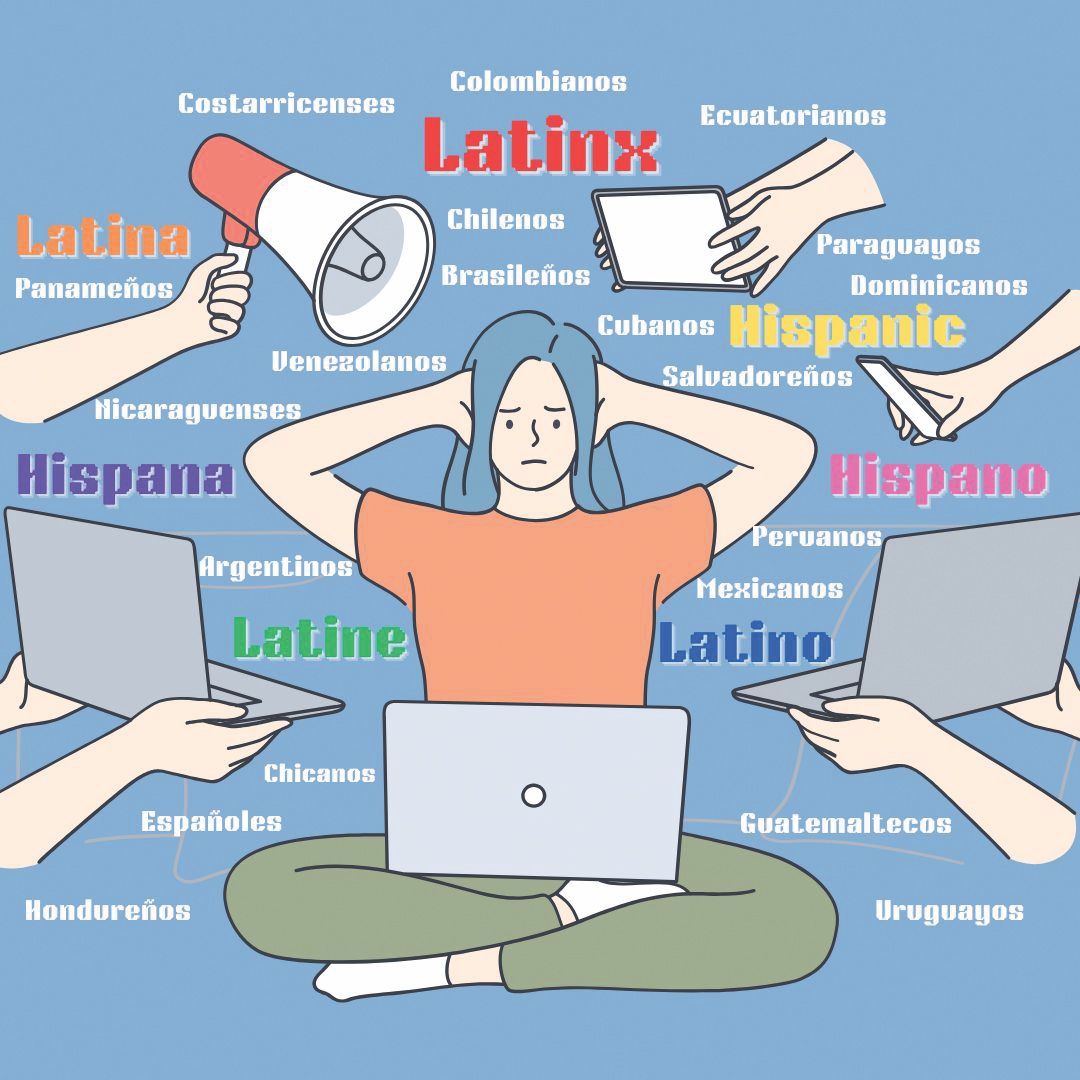The popularization of the term Latinx has been notable in recent years. Its growing usage in media, academia and everyday conversations has generated discussions about the gender-neutral alternative for Latino and Latina.
The term Latinx aims to be more inclusive of all gender identities within the Latin American community. However, while this term resonates with some, it also sparks resistance in others.
Cal State Bakersfield recently celebrated Latinx Heritage Month, which raises the question: Who really identifies as Latinx?
How do CSUB students, staff and faculty feel about the term? El Veloz conducted an anonymous survey to find out.
Of the 110 respondents, 72 identified as Latino/a/x/e. About a quarter of that number, 19, said they identified as Latinx, and 18 said they sometimes identified as Latinx.
Maria F. Rosas, a senior majoring in Psychology, said that when she first started hearing the term Latinx it bothered her, and while she has now come to terms with it, she still prefers to identify as Latina.
Others believe the term Latinx is being imposed on Latin-American communities and does not fit with the Spanish phonetic structure, given that it is a gendered language.
“It doesn’t feel right to replace Latino/a with Latinx as it defies the whole Spanish language that is dependent on masculine and feminine nouns,” said an anonymous individual who filled out the survey.
This was a common opinion among others who filled out the survey. Respondents often said, “The use of ‘x’ in the word is unnatural to the tongue,” and, “How is it supporting the marginalized to confuse them?”
The most commonly shared opinion was that people identified with the term Latinx but they did not want it to become the standard term.
“I don’t care what people choose to call themselves, but I would not like that to be the standard term used for myself and/or my culture,” said another anonymous individual who filled out the survey.
Despite the controversies, there are those who are in favor of more gendered inclusive terms in Spanish.
Dr. Jose Villagran, assistant professor of Ethnic Studies, said that while he understands that the term can be difficult for some to pronounce, that shouldn’t be an excuse.
“How is Mexico’s national oil company called? Pemex. The giant juice of Mexico, what’s it called? Jumex,” said Villagran.
He said that maybe it’s because of México’s relationship with the United States but that the “x” is already a part of the culture and that he will always defend the term and the minorities it represents, in this case non-binary individuals and women.
The term Latino is considered the neutral default usage but it leaves women in the shadows. All the neutral terms in Spanish are still masculine terms. The term Latinx is supposed to be inclusive towards women too, but not all women feel that way.
“It made me think that to have the ‘x,’ we are all the same, and I don’t feel the same because I am a woman,” said Rosas.
Another issue people have with the term is that it seems to put millions of people into a single category. However, this is not the only term that does this—Latino, Latina, Hispanic, these are all common terms that seek to categorize multiple diverse communities into a single category.
“I feel like it adds a label to me that ignores my individualistic cultural heritage. For people that identify as neither Latino or Latina, they can still be Mexican/ Cuban/ etc. Personally, I feel almost insulted being brought into an even more general group,” said an anonymous individual who filled out the survey.
Villagrán explained that while these terms can be very useful, especially for political goals, it is also incredibly complicated to categorize millions of people worldwide.
It is important to highlight that the term Hispanic cannot be used interchangeably with the terms Latino/a/x/e, as they do not have the same meaning.
The survey by El Veloz showed that, out of the 110 individuals who completed the survey, only 55 people reported understanding the difference between the terms Hispanic and Latino/a/x/e.
All of this is complicated by the fact that Latino, Hispanic and related terms are often confused.
The main difference between these terms is that Hispanics are from Spanish-speaking countries but excludes indigenous populations and Brazilians. On the other hand, Latinos are from Latin American countries. For example, Spaniards are considered Hispanics and not Latinos, while Brazilians are Latinos but not Hispanics.
Villagrán explained that sometimes it worries him that these terms are erasing identities that might not be as big.
“Many times, when people say Latino, I think they are really referring to maybe the Mexican and not the Puerto Rican or not the Dominican,” said Villagrán.
“Maybe Monday I’ll identify as Chicano, maybe Tuesday I’ll identify as Latino or Wednesday as Latinx; simply because I have the privilege of choosing and we all have this privilege,” said Villagrán.










